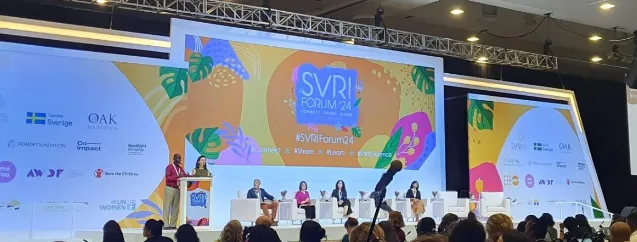A grasp on our project while while getting to its end

We are a consortium of two organizations SDI (social development international) and SBF (Syria Bright Future) working in NW Syria. We conducted a research project to explore the barriers that prevent the inclusion of DOA in GBV programs. We implemented the project in three areas, each with a unique social and ethnic mixture.
- Afrin, which has Kurd as host communities and Arabs as IDPs.
- Idleb, which has the biggest population of IDPs from all over Syria.
- Azaz, (Euphrates shield), where it has a mixture of Arabs Turkmen and Kurds.
These areas by their diversity can help generalize the results to all other areas to study the barriers.
The project also depended on local grassroots organizations, including Association for older people OPA to help in reaching the target groups.
KIIs were one of data collection methods and we designed the questions moving from general questions on the living condition of the targeted groups- older age and people with disability- towards gradually more specific questions on the protection needs and their participation in protection programs. This way interviewees felt that they have the chance to express whatever they want without being stressed to speak only about protection issues. As a result, we learned that meeting the daily requirements of life, is the top priority for these groups and as long as these needs are still unmet, protection services can’t become their priority especially under the harsh living conditions in NW Syria. And to get more information about barriers to protection services in particular, we included more protection practitioners in the research sample to help us learn the nuanced factors that prevent the inclusion of people with disabilities and older people (DOAs) in GBV programs.
At the end of the project, we were able to learn a group of factors preventing the inclusion of DOAs in GBV services, and those factors were divided into two main categories:
Indirect factors:
- General living conditions of DOAs: they expressed the miserable living conditions, which make them spend all their time and efforts to secure their basic needs while they consider participating or accessing GBV programs as a luxury.
- The general conditions of GBV programs: as these programs are new to the context and the role of it is not clear to the general population. Moreover, these programs in the context of NW Syria, lack the legal component of the protection services provided to GBV survivors usually which discourages people from seeking help from them as they fear the recurrence of violence.
- The general nature of the humanitarian projects in NW Syria, which are usually short-term projects. And because of the high competition to benefiting from these projects, there is a small room left for the meaningful participation of targeted people in designing, implementing and evaluating the projects.
Direct factors; which are divided in turn into:
- Factors related to attitudes:
- DOAs sometimes have negative perceptions about GBV programs and the competency of their staff to deal with them in a professional and effective way.
- The perceived corruption of NGOs, make beneficiaries think that services isn’t being provided equally.
- The lack of conviction of caregivers of the benefits of GBV programs.
- Institutional factors:
- The scarcity of programs that provide services specific to these groups.
- The lack of structural adjustment of building or communication methods to suit DOAs.
- One of the most mentioned factors was, the scarcity of transportation in most of the areas in NW Syria (and when available, is very expensive) which make it very difficult for DOAs to reach GBV services.
- The caregiver, sometimes, is also the perpetrator.
At the designing stage of our project our thinking was focused on how to find the specific barriers that face DOA inclusion. Luckily, when we implemented the project, data did not only provide information about specific barriers, but also provided general information about contextual factors that influence the life of DOAs, the protection and GBV programs. And these information has helped us came up with new insights as recommendations at the end of this project, like: when a GBV program needs to be implemented, and we want better inclusion of DOAs, we should not only think about combating the specific factors that affect DOA inclusion, but we have to think about possible general factors, that relates to the general living conditions of DOAs, and to the GBV programming in general.
Stay updated
Sign up for our newsletter to receive regular updates on resources, news, and insights like this. Don’t miss out on important information that can help you stay informed and engaged.
Related articles



Explore Elrha
Learn more about our mission, the organisations we support, and the resources we provide to drive research and innovation in humanitarian response.